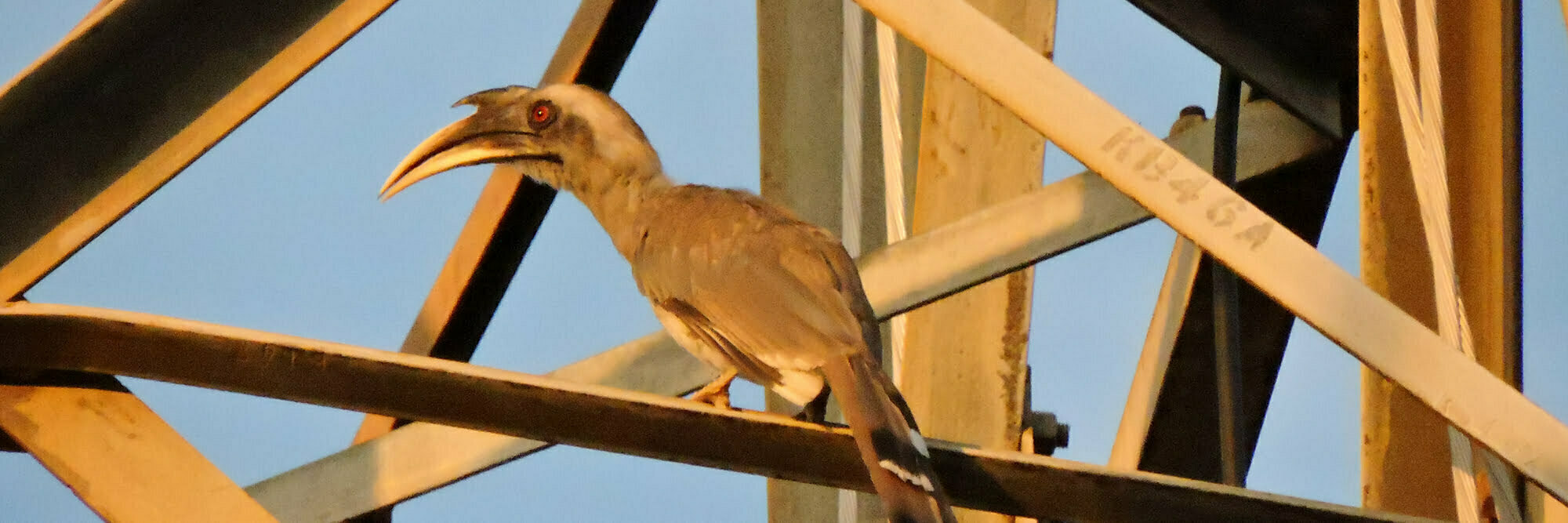IIHS’ urban ecology work focusses on understanding the impacts of urbanisation on urban and peri-urban biodiversity and ecosystem services; on fostering biodiversity-friendly practices; and evidence-based, nature-based solutions for sustainable urban transformations.
Urban Ecology and Biodiversity
Projects
IIHS LTUEO biodiversity surveys
College campuses and similar institutions are mostly the only green spaces and biodiversity hotspots in urban areas. IIHS, Kengeri campus, is home to a variety of species including birds, bats, small mammals and different kinds of insects. Nearly 120 species of birds have been spotted on campus, following monitoring and documentation. Some species such as the rosy starling and the greenish warbler are migratory species, which arrive at the campus during winters. Preliminary surveys to document mammal diversity on campus have identified eight bat species belonging to five families; as well as the Indian bush rat; Indian mongoose; and the black-naped hare.
The IIHS, Kengeri campus is home to a large community of arthropods ranging from arboreal ants, grasshoppers, butterflies and even arachnids, such as the whip scorpion. Close to 50 butterfly species have been observed on campus – the crimson-tip and the plain orange-tip are scrub forest specialists. Other species such as the spectacled cobra, Indian black turtle and Indian tree frog have also been found on the campus.
A total of 87 plant species have been identified and new varieties of herbs, grasses and shrubs are added to the growing list every month.
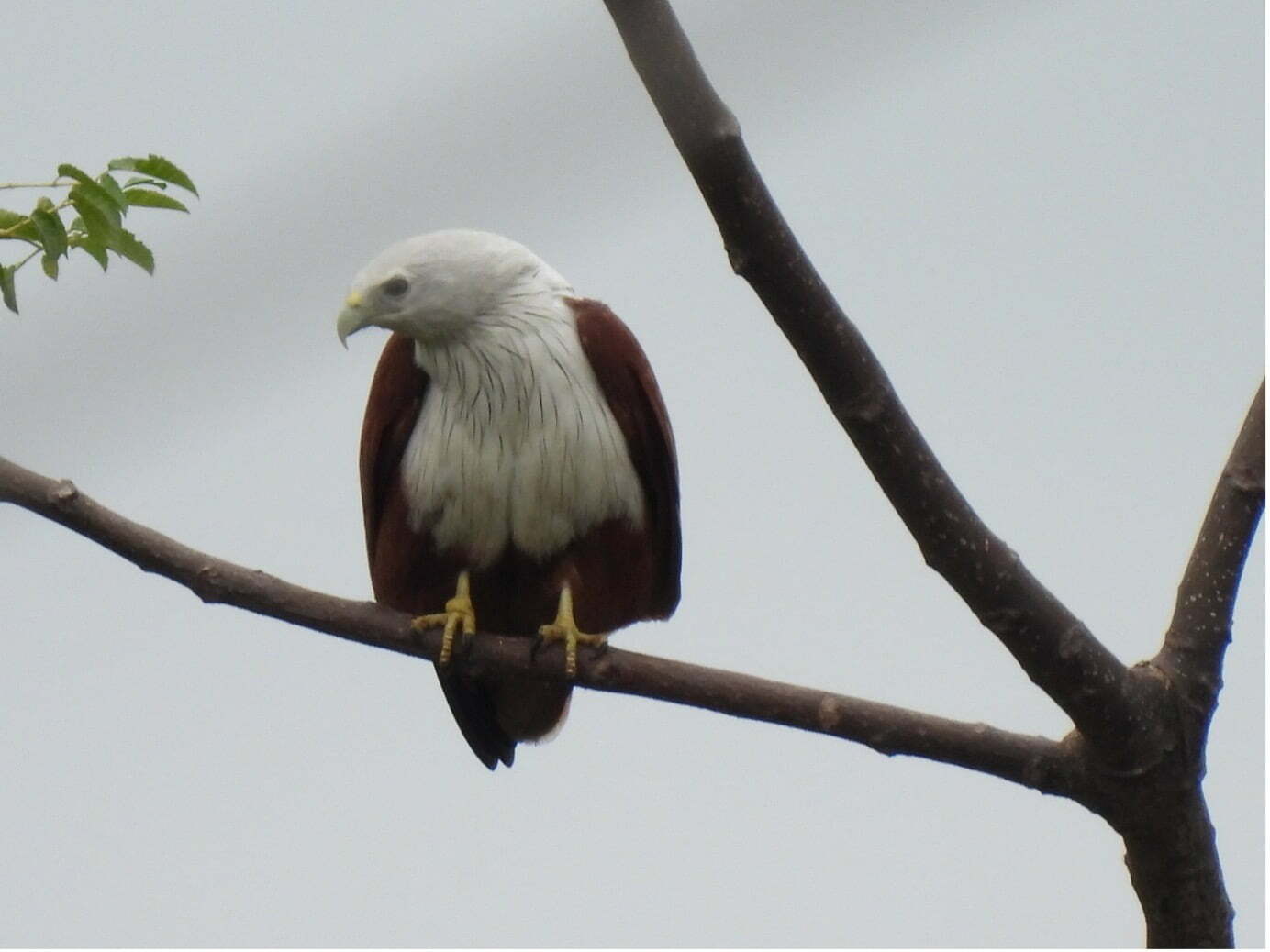
Brahminy kite, LTUEO /Kengeri campus
Integrating food, water and ecology in research and practice
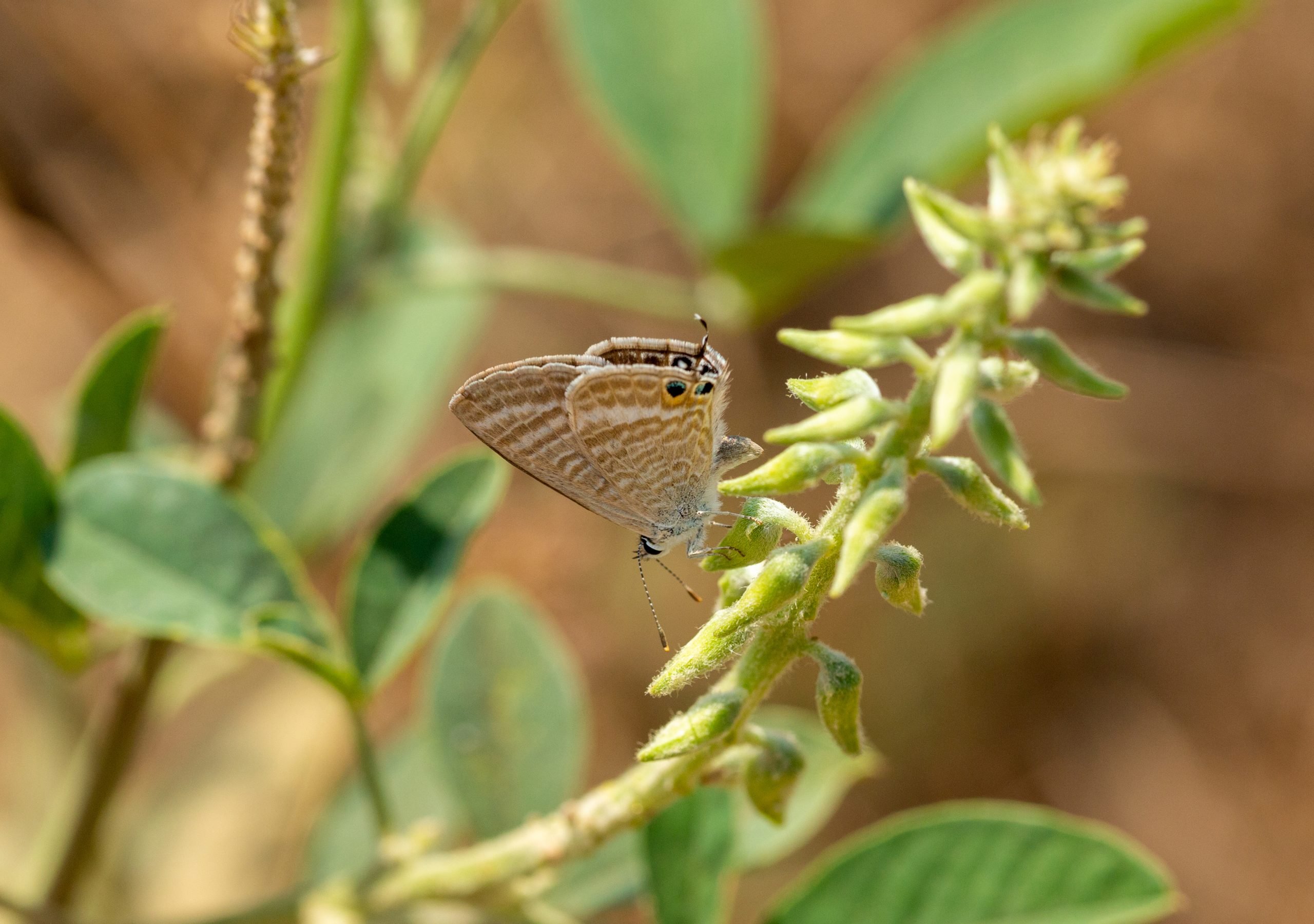 Urban and peri-urban spaces are potentially important sites for organic food production. From roof-tops and balconies to campuses, institutional and organisational, such spaces, if designed for organic food production, could benefit from pollination services and also provide resources to sustain urban biodiversity.
Urban and peri-urban spaces are potentially important sites for organic food production. From roof-tops and balconies to campuses, institutional and organisational, such spaces, if designed for organic food production, could benefit from pollination services and also provide resources to sustain urban biodiversity.
The IIHS, Kengeri campus and Long-Term Urban Ecological Observatory (LTUEO) has an organic food farm with over 23 species, many of which benefit from visits by pollinators and pest control by birds and bats.
Amongst species that have been seen pollinating the pigeon pea plants are the pea blue butterfly, while the jowar has been visited often by stingless bees, and the moong crop by the Apis cerana honeybee, from the bee boxes on campus. Wild bees too visit the food farm and fruit trees. At the same time, the brinjal crop has sometimes been destroyed by another member species of the rich biodiversity on campus, the brinjal borer or the caterpillar of the Leucinodes orbonalis moth.
Pea blue butterfly, LTUEO /Kengeri campus
Water is often a precious and limiting resource for ecosystems, people, and urban spaces, and the IIHS LTUEO is no exception. Soil tensiometers have been installed to measure plant-available soil moisture that enables day-to-day decisions on irrigation and assessments of moisture retention at the rooting depth of the food plants. The food farm will be managed by integrating sustainability and nature-based solutions through the lens of an integrated framework linking ecology, water and food systems.
Birds across Bengaluru

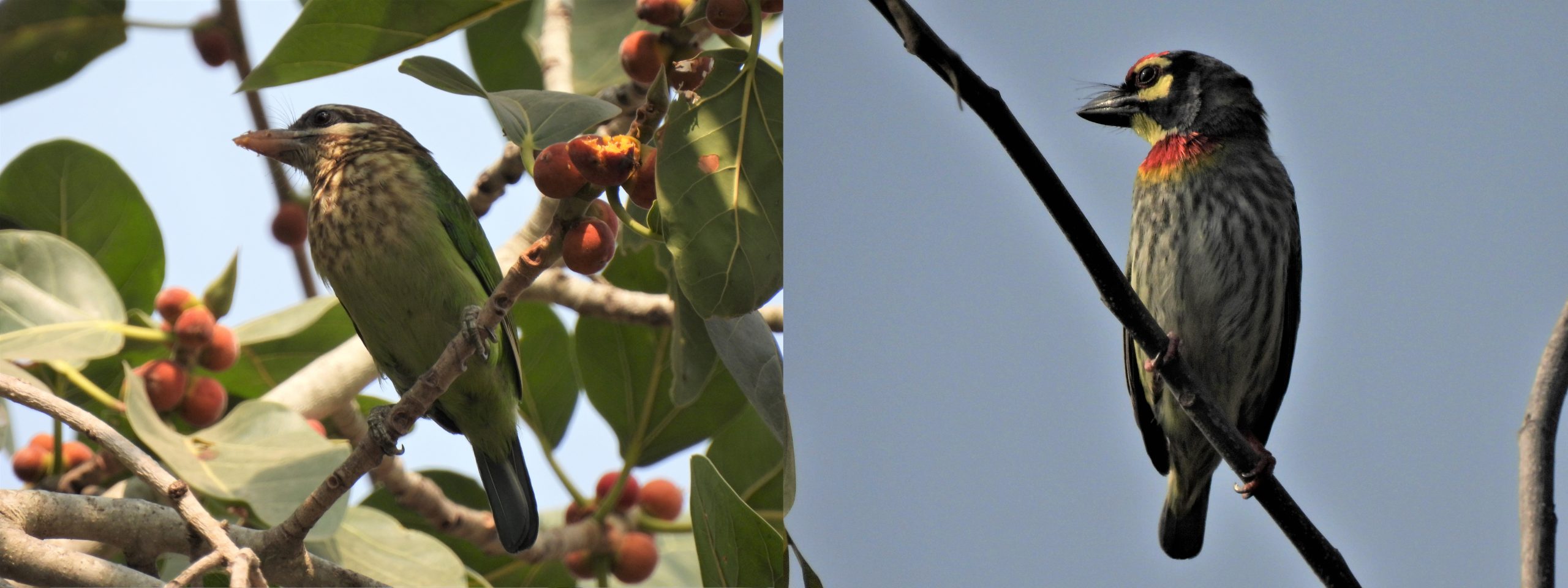
The coppersmith barbet shows a restricted distribution around the city and is more commonly seen in the outskirts of the city whereas the white-cheeked barbet shows high occurrence in the centre of the city. Both are frugivores and cavity birds found in the city.
As part of long-term urban ecology research, IIHS teams study trends in bird population over time in and around Bengaluru. Data on bird observations and abundances collected by citizens, scientists and bird enthusiasts over the past 10 years uploaded in the online repository, eBird are some of the sources of information. The team looks at patterns that emerge for different species, and answers questions to determine what role complex dimensions of urbanisation play in them through these projects.
Publications
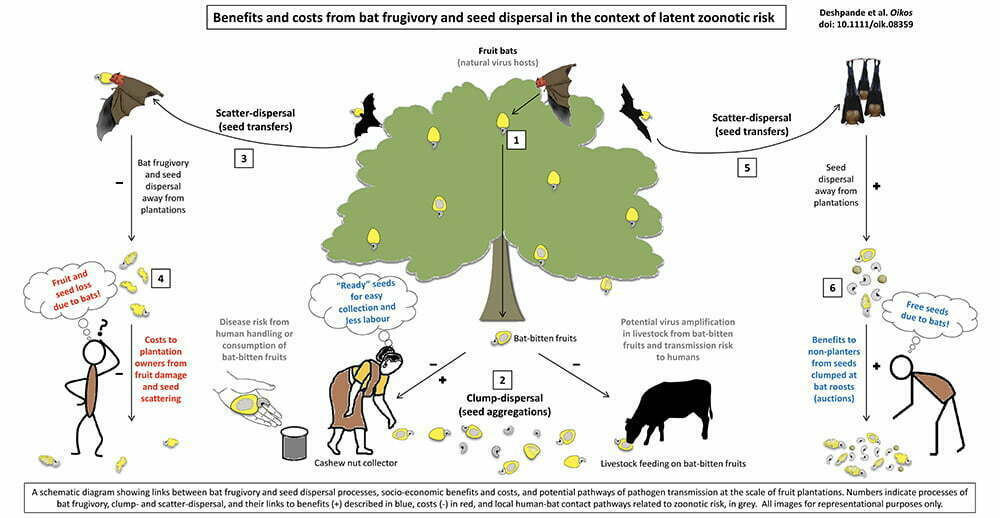
Stretching the Habitat Envelope: Insectivorous Bat Guilds Can Use Rubber Plantations, but Need Understorey Vegetation and Forest Buffers.
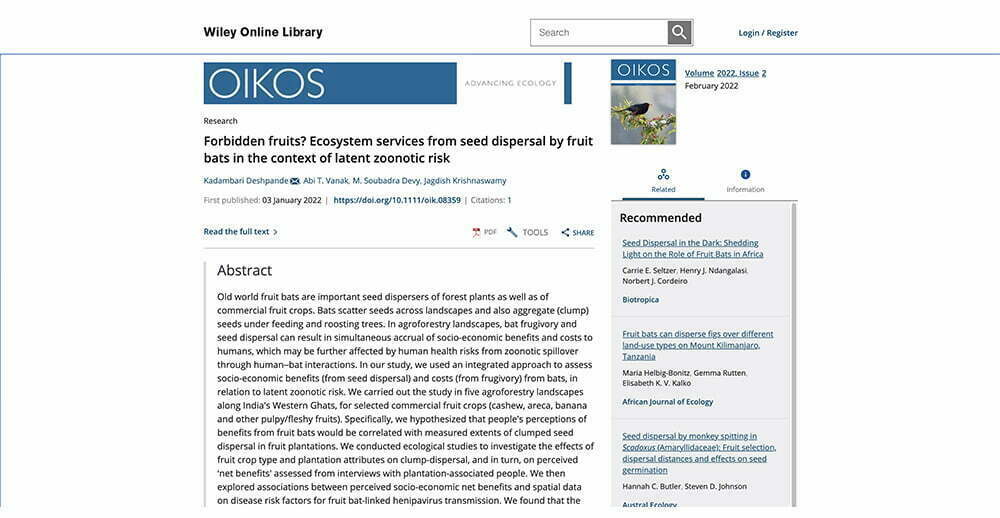
Forbidden fruits? Ecosystem services from seed dispersal by fruit bats in the context of latent zoonotic risk.




